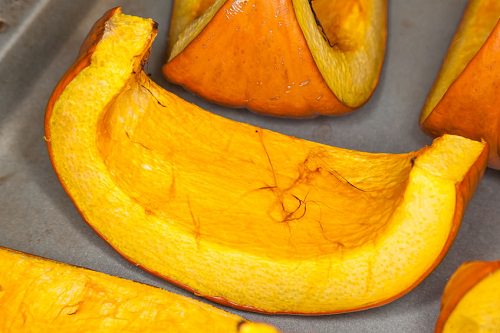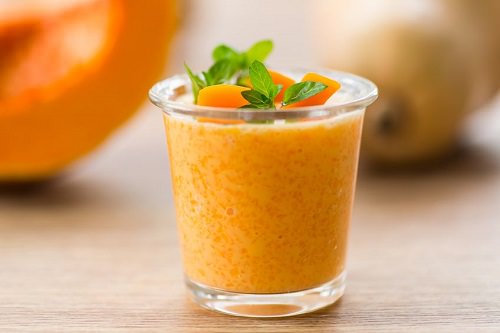As a season, fall has so many redeeming qualities, especially if you live somewhere with four true seasons throughout the year; the air becomes a little cooler in the morning, the humidity is non-existent, and all sorts of delicious and nutritious fruits and vegetables are available locally! I know, it seems like a strange thing to get excited about, but eating fresh from local farms (or even your very own garden) means that you are eating vegetables as they are fresh from the ground; they are not being forced farmed and forced ripened, you are eating them as they were intended to grow and ripen, which means they are totally saturated with nutrients and vitamins and taste their best.
What are the best fall veggies for you?
Some of the vegetables with the most nutrients right from the ground are squash: there are so many varieties, they have wonderful nutrition, and they are such a versatile vegetable that can be added to almost anything! Each variety has a totally differently flavor, and because most squash have such thick skin, they can be stored for up to 6 weeks once picked, so you can buy up your favorites and store them…or buy a few different varieties and try them all. My personal favorites are sugar pumpkins, kabocha, spaghetti, and butternut squash because I cook and bake with them, and add them to my morning smoothies too!
Why are squash so good for you?
Each variety has its own amount of nutrients, however there are some key nutrients that squash are very high in, making them not only tasty but also very good for your health (and hitting weight loss goals)!
Fiber: All squash tend to have very fibrous flesh, which softens when cooked, which gives it a nice consistency, and it has many benefits. As fiber is difficult for your body to absorb, it slows down digestion in the stomach, helping to maintain steady blood sugars, which makes you feel full longer, and curb cravings. Because of that, you tend to take in less food when you eat a high fiber diet (you feel fuller faster), but it is also great for colon health and it helps to flush out your intestines by moving quickly through the digestive tract, giving you a flatter stomach. Be warned when you first start adding in these high fiber gems to your diet, you may feel a little bloated at first, but once your body gets used to it, you will feel great!
Vitamin A: Technically, squash are high in beta-carotene, which is changed into Vitamin A when it is broken down and absorbed in the stomach. Regardless of that, both are great sources of nutrition. They are high in antioxidants, and help to boost your immune system. Studies have found that diets high in beta-carotene result in less cardiovascular disease (think stroke, heart attack, etc) and lower rates of oral and lung cancers (which are very prevalent these days.) And Vitamin A assists with healthy vision, improves your skin (skin is more vibrant looking – who doesn’t want that?), and it has been shown to improve sperm function and production. Both high levels of beta-carotene and Vitamin A are a winning combination in squash!
Read also – 10 Ways to Sneak in Healthy Eating
Vitamin C: I bet you thought you knew everything about this vitamin, but there are new studies coming out all the time related to the benefits of a diet high in Vitamin C. It does help to boost your immune system, as it is one of the first vitamins depleted when we have a stress response (which usually makes our immune system work harder) so eating big doses can help to get your immune system back in the swing and fight off those common cold viruses. Women with diets high in Vitamin C have also been found to have skin with less wrinkles and fewer problems with skin dryness. It also has recently been found that people who eat high Vitamin C diets, have a decreased risk of stroke, and while the exact reason is unknown, it’s a good enough reason for me to eat high Vitamin C foods!
Now that you know how great squash are for you, you need to know how to cook them and add them to your diet!
How do I cook squash?
The best way, is to roast squash because after they are roasted, you can remove the pulp and freeze it for later, or cook/bake with it immediately. To roast to perfection every time, without fail:
- Preheat your oven to 375F.
- Slice the squash in half (takes some muscle) and scoop out the inside seeds.
- Place the squash skin side up in a roasting dish, puncture the skin with a fork 4 times on each side, and drizzle a little olive oil over the top.
- Roast for 45 minutes. (you know its ready because you can easily push in the outside skin and it feels soft)
- Let the squash cool for a bit, and use a spoon to scoop out the inside pulp, perfectly roasted… and you can add to your favorite recipes or try something new!
How can I get more squash in my diet?
Easy, add it to a smoothie! My “go to” pumpkin smoothie:
- 1/4 cup fresh pumpkin
- 1/4 cup mango (frozen is great if you don’t have fresh)
- 1/2 an orange (or juice equivalent)
- 1 teaspoon chia seeds
- 1 teaspoon flax seed (I prefer ground)
- 1 teaspoon fresh ginger
- 2 tablespoons uncooked oatmeal
Put all ingredients in a blender, fill halfway with your milk of choice, blend on high for 2 minutes, then pour, drink, enjoy, and feel healthy!
Small changes in your diet can greatly improve your overall health, and eating veggies that are in season, at their freshest, can be one of the biggest steps towards a healthy lifestyle and a healthy body!
In Good Health!



